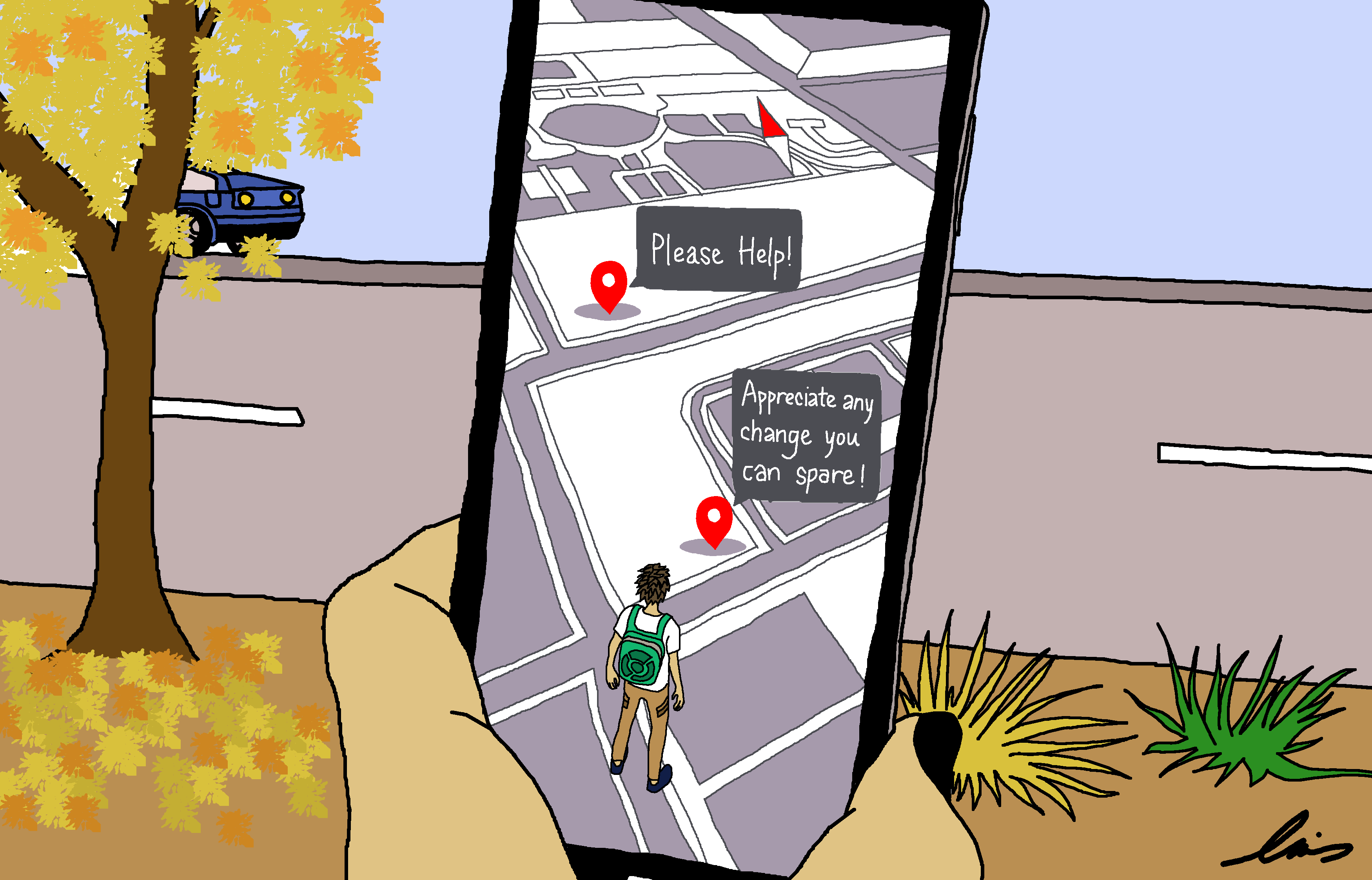When was the last time you saw a homeless person panhandling? How did it make you feel? Guilty? Annoyed? Maybe — just maybe — you wanted to help, but weren’t sure how.
Well, much like food delivery and astrology, there’s an app for that. After witnessing a Black man panhandling, former tech employee Jonathan Kumar created Samaritan, a contemporary mechanism to help homeless individuals. Samaritan offers privileged passersby a way to help the homeless without needing to make eye-contact or use cash. Donations are even tax refundable.
Kumar’s program has two main goals: to provide urbanites with a convenient way to donate to homeless people in their area and to help homeless people develop closer connections with their community.
After two years of operation in the Seattle area, Kumar hopes to expand his enterprise. However, the Samaritan approach is not as good as it may appear and — despite homeless and social inequality crises in Toronto — it is absolutely not a solution worthy of import.
A seemingly straightforward system
Potential donors download the Samaritan app, which alerts them when they pass by a participating homeless person. The homeless participants are tagged with beacons that beam their photo, personal story, and financial need to the would-be Good Samaritan’s phone. In most photographs, program participants wear their beacons around their necks like crosses.
Givers can select the amount of money they would like to send and cue the transaction in a few swipes. The money is then sent to the beacon holders, who can redeem the donation at participating stores.
While participation in the Samaritan program does not necessarily preclude the homeless from seeking other avenues of respite, it explicitly seeks to help sustain those left behind by mainstream sources of support.
While this may seem like a step forward, let’s take a closer look.
Despite Kumar’s lofty ambitions, the app itself is not particularly popular among the people it was purportedly designed to help.
In one telling interaction recorded in the Seattle Times, a Samaritan employee stood outside a temporary work placement agency, attempting to drum up interest in the beacons. One man, initially intrigued, looked at the demonstrative beacon the employee held. When he saw it, he asked, “It labels me as a hobo?”
Another reason for the program’s low participation rate is the requirements it imposes on homeless users. Not only are their choices and movement restricted, but beacon wearers must attend monthly meetings with Samaritan counsellors, otherwise they will lose access to the money on their account. The disciplinary tool swings between the collarbones of the wearer.
Gatekeepers to charity
Although Kumar has stated that Samaritan does not use institutional vetting processes for potential beacon recipients, he argues they seek out “those downtown that are truly struggling with homelessness and actively are trying to get themselves out.”
But how can they tell who is truly suffering, and moreover, who sets the definition?
Put simply, the donors determine who is allowed to avail of the service. Through the linkage of initial appearance and quick biographies with donations, participants must market themselves to their potential Samaritan. The appearances and backstories displayed on the app become weapons: a spade and a scalpel used to shape the kinds of people others want to give to.
Even if the donation is given, its very form creates other entanglements. The digital currency donated by Samaritans can only be used to buy “the essentials,” as determined by the developers who created the app and the stores willing to work with the program.
And if they do not have a cell phone or a data plan, beacon holders have no way of knowing who donated or in what amount. In order to check their own balance, they would have to find a participating store and inquire.
Siloing social classes
One might argue — and indeed, Kumar and his supporters do — that removing the cash component of roadside donations enables more spontaneous generosity, which in turn leads to more support for the homeless.
However, the giver — not the recipient — clearly benefits more from this cashlessness. It’s not just the removal of financial autonomy from the homeless person that is troubling either — reducing donations to a swipe sanitizes what should be uncomfortable.
Although some might insist that the app genuinely does help create connections, Samaritan actually works to further silo different social classes. Today’s Good Samaritans can give without looking up from their phones and feel better about themselves without actually encountering anyone. The app makes local suffering as distant as possible.
Moreover, valving compassionate impulses off through a quick dash of a digital credit card could reduce the likelihood of givers becoming more involved in long-term aid or advocacy efforts. After all, they have done their good deed of the day.
At the end of the day, Samaritan is a for-profit company, which makes donors pay up to 7.5 per cent of their total donation for the privilege of a painless transaction.
Contrary to many contemporary invocations, the parable of the Good Samaritan is not about financial generosity. In the biblical story, a man is robbed and left bleeding on the side of a busy road. Two travellers pass him by, but the third — a Samaritan — stops. He cleans the victim’s wounds, clothes him, feeds him, seats him on his donkey, and shares his room with him.
Fundamentally, it’s a story of human connection — of messy, visceral sharing between those left intact and those robbed. This is the spirit of giving we must foster. Look to the work of Eva’s Initiative for Homeless Youth, for example, which fulfils the short term needs of homeless youth in Toronto of housing and food while also offering training and emotional support.
Actions rooted in our fundamental closeness, not distance, are the only path toward resolving homelessness and social inequality in Toronto.


